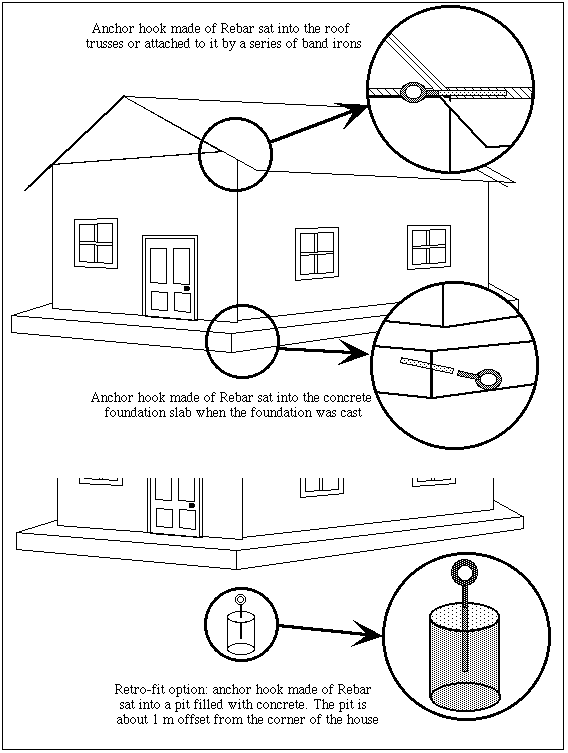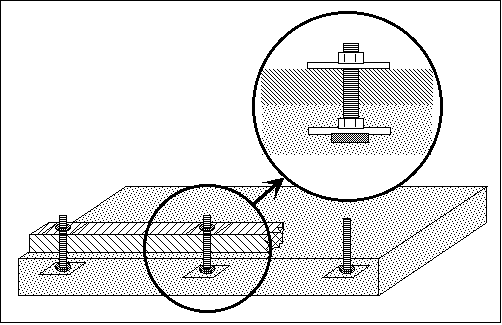

|
Essays on the Marshallese Past
Low technology reduction of damage to
|
The passing of the tropical storm "Zelda" in late November 1991 and of the typhoon "Axel" in early January 1992 has once more shown that the islands on the atolls of the
It is now time to pool all available resources to ensure that damage in future occasions of typhoons will be less than the damage incurred this time. One of the great, largely untapped resources the
In this chapter we will have a look at the way the Japanese pre-World War II administration attempted to typhoon proof their houses. All these houses were wooden structures set on a concrete platform.
Protecting the roof
In order to typhoon-proof their roofs, the Japanese ensured that the roofs were well built with strongly reinforced and well connected roof trusses. In addition they provided anchor points, with which the roof could be tied down to the ground, not unlike a tent. Two options exist:

Figure 1

Figure 2
In both cases a second set of anchor points would be attached to the roof trusses. These would either be imbedded in the wood, or would be attacjed to the trusses by a series of well bolted band irons. In case of an impending storm then, guy wires, or strong ropes could be strung between the anchor loops at the roof and the ground, thus tying the roof to the ground.
There is an option which can be utilised for these houses which do not possess roof trusses strong enough to allow for the installation of iron anchors: In this instance, in case of an impending storm, a strong rope can be anchored at one ground anchor, thrown over the roof of the building, and tightly tied to the other ground anchor.
This trick was utilised by the Japanese when they built their administrative structures in the 1920s and 1930s throughout Protecting the walls
The Japanese also utilised another method to prevent that the houses would lift off the foundations. When the foundations were cast, the Japanese cast in strong long bolts, which protrude for about 4-6 inches above the foundation The wooden sleepers, on which the walls would be erected, would be sat upon these bolts and fastened by adding a large washer plate and a nut.
In Djarrit, Majuro Atoll, there is still a Japanese building, erected as part of the seaplane base, which still stands and which - 50 years after construction - provided ample evidence for the strength of the building method employed.
![]()
| select from the following... | ||||||
| |
||||||
|
Digital Micronesia-An
Electronic
Library & Archive
is provided free of charge
as an advertising-free
information service
for the world community. It is being maintained by Dirk
HR Spennemann, Associate
Professor in Cultural
Heritage Management, Institute of Land, Water and Society and School
of Environmental & Information Sciences, Charles
Sturt University,
Albury, Australia. The server
space and technical support are provided by Charles
Sturt University as part of its commitment
to regional engagement. Environmental
SciencesInformation
Sciences
|
||||||